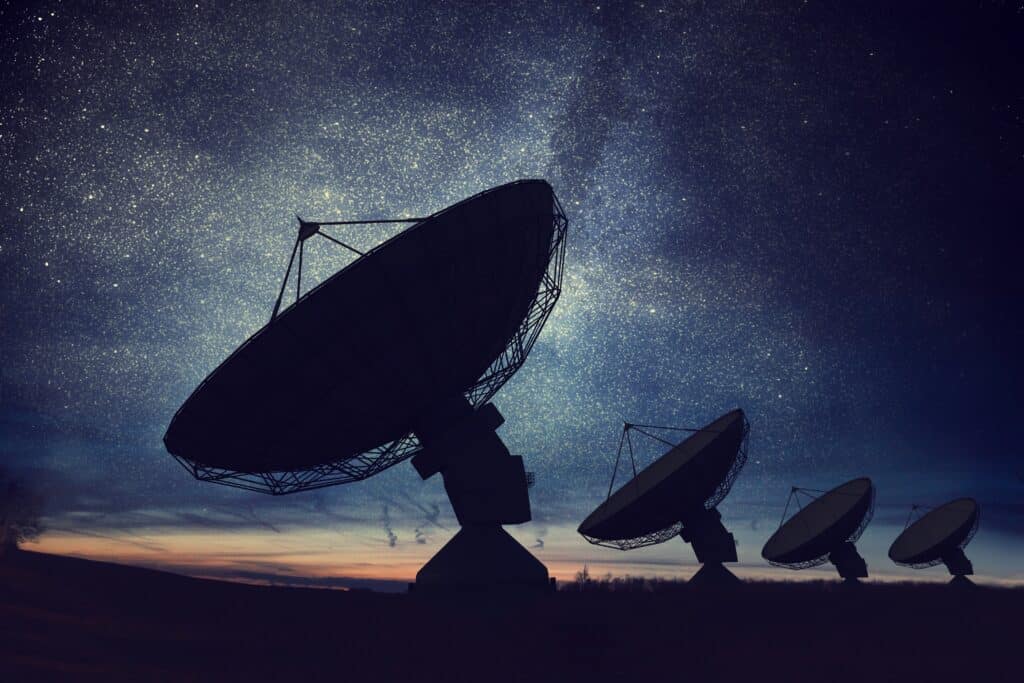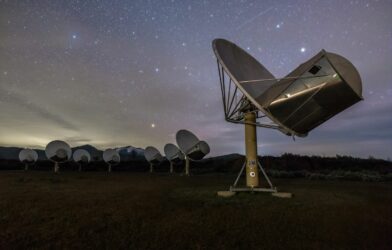A galaxy far, far away has caught the attention of scientists as mysterious radio signals, known as fast radio bursts (FRBs), have reached Earth. Lasting only a millisecond, these enigmatic beams carry an astonishing amount of energy, equivalent to what our Sun emits in a century.
Originating from the outskirts of a dwarf galaxy located three billion light years away, these FRBs have ignited speculation that they could be messages from highly advanced alien civilizations. However, scientists also propose alternative theories, suggesting that these bursts may result from cataclysmic events such as collisions and explosions involving dense matter like black holes or neutron stars.
Nevertheless, the elusive nature of their source poses not only challenges for physics but also for the field of astronomy.
“A total of 113 bursts from FRB 20190520B were detected by the Parkes telescope, exceeding the sum of the number of fast radio bursts previously discovered at Parkes,” reveals lead author Dr. Dai Shi from Western Sydney University, in a statement.
This particular fast radio burst, named FRB 20190520B, has attracted significant attention due to its unprecedented consistency in generating detectable signals, making it an ideal candidate for further investigation. To unravel its mysteries, an international team embarked on a monitoring campaign, utilizing the Parkes telescope in Australia and the Green Bank Telescope (GBT) in the U.S. The combined analysis of data from these telescopes, spanning three continents, led to intriguing findings.
Among the discoveries, researchers detected magnetic fields intertwined around the bursts. Dr. Feng Yi from Zhejiang Laboratory in China and Anna Thomas from West Virginia University (WVU) meticulously examined the polarization properties of FRB 20190520B and observed a striking phenomenon – the Faraday rotation measure (RM) underwent two abrupt sign changes. This unexpected behavior indicates that during the propagation of the burst signal, the polarized characteristics are influenced by the surrounding plasma.
Shedding light on this observation, corresponding author Dr. Li Di from the Chinese Academy of Sciences in Beijing explained: “The RM can be approximated by the integral product of the magnetic field and electron density. While variations in RM can arise from either factor, a sign change necessitates the reversal of magnetic fields, as electron density cannot become negative.”
The probable cause of this reversal could be attributed to the signal traversing a turbulent, magnetized plasma screen. Co-author Professor Yang Yuanpei from Yunnan University in China metaphorically described the magnetic field’s turbulent components surrounding repeating fast radio bursts as tangled as a ball of wool. This complexity likely emerges when the signal interacts with the halo of a companion object, whether it be a black hole or a massive star with intense stellar winds.
Understanding these dramatic changes in the magnetized environment surrounding FRBs marks a significant stride toward unraveling the origins of these cosmic explosions.
Published in the journal Science, this study opens up new avenues for exploration as scientists seek to decipher the mysteries concealed within the captivating fast radio bursts from a galaxy billions of light years away.











-392x250.png)
